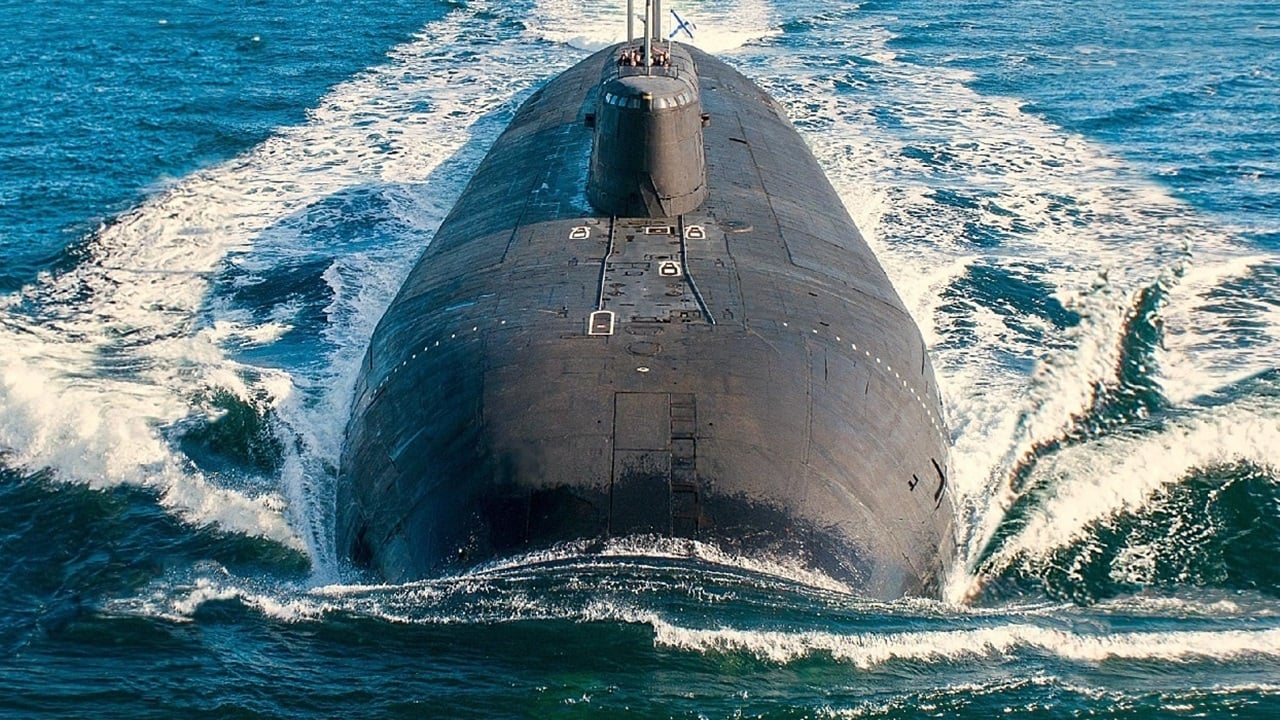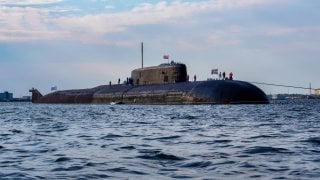Russia's Oscar-Class Submarines: Built to 'Take Out' U.S. Navy Aircraft Carriers
During the Cold War, the Soviet Union developed the formidable Oscar-class submarines (Project 949 Antey), designed to counter U.S. Navy capabilities, particularly against NATO aircraft carrier groups.
Summary and Key Points: During the Cold War, the Soviet Union developed the formidable Oscar-class submarines (Project 949 Antey), designed to counter U.S. Navy capabilities, particularly against NATO aircraft carrier groups.
-These large submarines, equipped with long-range P-700 Granit anti-ship missiles, were seen as a significant threat.
-The class made headlines in 2000 with the tragic sinking of the Kursk submarine.
What Made the Oscar-Class Submarines Such a Threat to the U.S. Navy and Its Aircraft Carriers
Today, while only a few Oscar-class submarines remain operational, they are still notable, especially with the potential to carry Russia’s Poseidon nuclear-capable underwater drones, which pose a significant threat to coastal targets.
During the Cold War, the Soviet Union prioritized the development of advanced submarines that could counter the U.S. Navy’s capabilities. Engineers began working on Project 949 Antey SSNs (designated by NATO as Oscar I and Oscar II) in the 1970s.
Overall, fourteen ships in this class were produced. The purpose of the Ohio class submarines was to go up against NATO aircraft carrier battle groups. Equipped with long-range P-700 Granit anti-ship missiles and other capabilities, the Oscar class was seen as quite formidable. Over the years and following the collapse of the Soviet Union, the planned number of Oscar II variants was slashed. Only a few of these boats are currently operational due to funding limitations.
Specs and Capabilities
The Oscar-class submarines are very large since they were designed to carry scores of armaments. Each of these SSNs measures more than 154 meters long and displaces around 12,500 tons while surfaced. Additionally, these vessels can sail at speeds of thirty-seven miles per hour while submerged.
The Oscar II ships are slightly longer than their sister submarines, likely designed for quitter propulsion and enhanced electronic systems. These ships also feature a double-hulled design, which consists of an inner pressure hull and an outer hydrodynamic hull. With the double-hulled design, these ships are better suited to survive against torpedoes.
Armament-wise, the Oscar-class can pack a punch. As detailed by Naval Technology, “The submarine is equipped with 24 SS-N-19 Granit (NATO codename “Shipwreck”) cruise missiles with a range of 550km. The missile has a length of 10.5m and weighs 6.9t with a warhead weighing 1000kg. Its speed is Mach 1.5. Under the START treaty, nuclear warheads for these missiles have been replaced with high-explosive warheads.
The missiles, which are launched while the submarine is submerged, are fired from tubes fixed at an angle of approximately 40°.The tubes, arranged in two rows of twelve, are each covered by six hatches on each side of the sail, with each hatch covering a pair of tubes. The launchers are placed between the inner pressure hull and the outer hydrodynamic hull.”
The Kursk Disaster
The Oscar-class submarine series made headlines in August 2000, when the Kursk (K 141) sank in the Barents Sea. More than 100 crew members were killed in this accident. This tragedy occurred during Russia’s first major naval exercise in more than a decade.
The Kremlin was criticized for refusing international aid in retrieving the submarine.
Upon refloating the Kursk after days of effort, the full nature of the disaster was revealed. There had indeed been survivors — 23 sailors that congregated in the ninth compartment of the submarine.
The nuclear reactors which powered the Kursk had gone into emergency shutdown.

This was a blessing in that they were inert and stable, but it meant all power, light, and air recycling processes were shut down.
If Moscow had accepted foreign help in its rescue effort, perhaps these 23 individuals would have had a fighting chance. In 2021, a retired Russian admiral claimed that the Kursk disaster was actually caused by a collision with a NATO submarine.
This unproven claim has been largely debunked.
Is the Oscar-class a Threat?
Today, the Oscar-class submarine holds the title of longest submarine in the world.
Comparably, the U.S. Navy’s Ohio-class submarines measure around 45 feet shorter than Russia’s Oscar-class. Although the Oscar has not been fitted with nuclear capabilities, it can be fitted with the Poseidon nuclear-capable underwater drones.
One of Russia’s six new strategic weapons announced by President Vladimir Putin back in 2018, the Poseidon (NATO reporting name Kanyon) is capable of delivering both nuclear and conventional payloads. With a reported range of roughly 5,200 miles, the Poseidon also allegedly uses supercavitation and can reach an underwater speed of 108 knots.
Industry experts are concerned about the Poseidon’s potential capabilities. As detailed by Brent Eastwood, “The Poseidon, if accounts are true about its development from more mainline Western sources, is indeed fearsome. It would have seemingly unlimited range to detonate a two-megaton (equivalent to two million tons of TNT) nuclear device close to shore. It could threaten the densely-populated east coast of the United States by causing nuclear fall-out and maybe a ‘radioactive tsunami’ as the Russian propaganda claims.”
About the Author: Maya Carlin
Maya Carlin is an analyst with the Center for Security Policy and a former Anna Sobol Levy Fellow at IDC Herzliya in Israel. She has by-lines in many publications, including The National Interest, Jerusalem Post, and Times of Israel. You can follow her on Twitter: @MayaCarlin.
All images are Creative Commons and/or Shutterstock.


